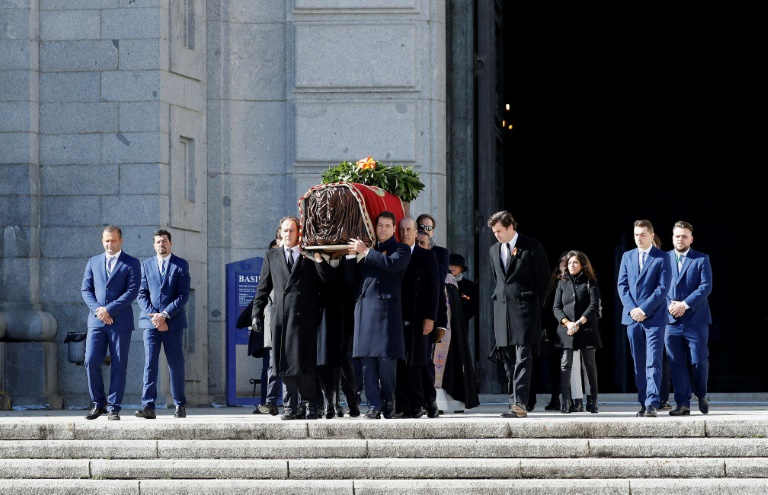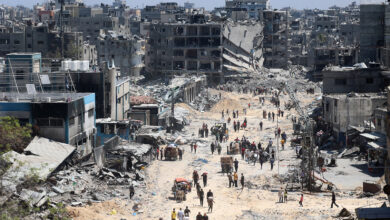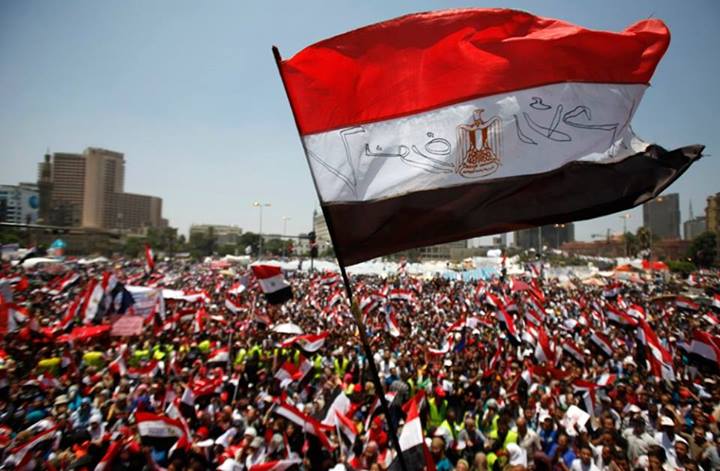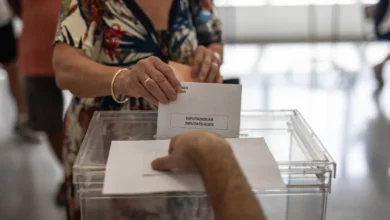
Spain on Thursday exhumed the embalmed body of Francisco Franco from a grandiose state mausoleum ahead of its relocation it to a more discreet grave in a country still conflicted over the dictator’s decades-long regime.
The long-awaited exhumation process began at around 11:00 am (0900 GMT) with his coffin carried out of the imposing basilica at the Valley of the Fallen some two hours later.
The coffin was carried by eight family members and placed into a hearse and driven to a helicopter where it was to be transferred to a grave just north of Madrid.
Some 22 relatives of the late dictator were on hand to witness the opening of the grave near Madrid, which has been a draw for both tourists and right-wing sympathizers.
After removing the heavy flagstone on top of the grave, which reportedly weighs some 1,500 kilograms (1.5 tonnes), the dilapidated casket was then secured before being extracted, a government spokesman said.
Prime Minister Pedro Sanchez has made moving Franco’s remains a priority since coming to power in June 2018, saying Spain should not “continue to glorify” a man who ruled with an iron fist after the bloody 1936-39 civil war won by his Nationalist forces.
Chasing ‘Franco’s mummy’ votes
The hearse drove the coffin several hundred meters to an open plaza where it was transferred to one of two waiting airforce helicopters for the brief flight to El Pardo, some 50 kilometers away.
There his body will be reburied alongside that of his wife in Mingorrubio state cemetery.
Ahead of his arrival, around 200 supporters of the diminutive dictator rallied outside the cemetery, some holding Falange banners, others draped in older Franco-era Spanish flags, shouting “Long live Franco!”
“Franco will never die. For me, today is about loyalty. I had to come to thank him for everything he has done for us,” said Miguel Maria Martinez, a pensioner from the Basque Country.
Initially scheduled for June 2018, the operation was delayed by a string of legal challenges filed by Franco’s descendants.
Sanchez has described the operation as “a great victory” for Spanish democracy.
But coming just over a fortnight before a general election, his rivals have accused him of electioneering, with Pablo Iglesias of the radical leftwing Podemos saying he had unearthed “Franco’s mummy” to win votes.
Spaniards are divided over the exhumation, with 43 percent in favor, 32.5 percent against and the rest undecided, according to an El Mundo poll published earlier this month.
‘Glorious crusade’
Ordered by Franco in 1940 to celebrate his “glorious (Catholic) crusade” against the “godless” Republicans, construction of the Valley of the Fallen lasted for almost 20 years.
Partly built by the forced labor of political prisoners, the site is one of Europe’s largest mass graves, housing the remains of over 30,000 dead from both sides of a civil war that was triggered by Franco’s rebellion against an elected Republican government.
Ordered by Franco in 1940 to celebrate his “glorious (Catholic) crusade” against the “godless” Republicans, construction of the Valley of the Fallen lasted for almost 20 years.
Partly built by the forced labor of political prisoners, the site is one of Europe’s largest mass graves, housing the remains of over 30,000 dead from both sides of a civil war that was triggered by Franco’s rebellion against an elected Republican government.
Most had fought for Franco but the monument also contains the bones of many Republican opponents who were moved there from cemeteries and mass graves across the country without their families being informed.
A 150-meter (500-feet) cross towers over the site which Franco dedicated to “all the fallen” of the conflict in what he called a gesture of reconciliation.
Since Franco was buried there after his death in 1975, flowers have been placed daily on his tomb.
‘Desecration’
In 2017, the parliament approved a non-binding motion calling for Franco’s remains to be removed from the Valley of the Fallen, but it was ignored by the former conservative government of Mariano Rajoy.
Conservatives repeatedly accuse the left of opening wounds from the past with a so-called historical memory law, approved by a previous Socialist government in 2007.
That law ordered the removal of all symbols of the Franco regime and called for the identification of those bodies dumped into mass graves during the civil war.
Rajoy, who governed from 2011 until 2018, proudly said his government never gave any money to apply this law.




